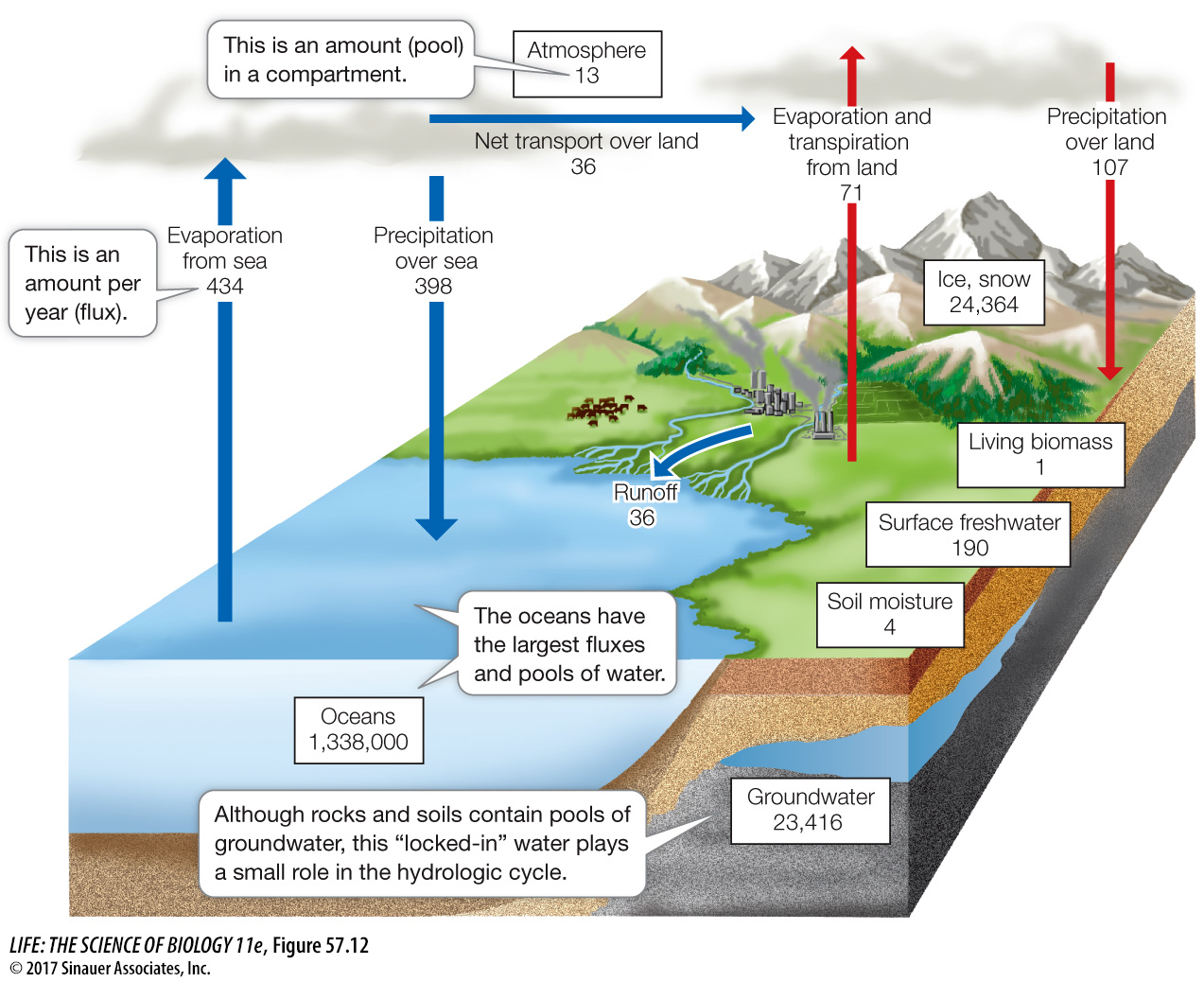Water cycles rapidly around the globe
We start our discussion of global biogeochemical cycles with the water cycle—known as the hydrologic cycle—not only because water serves as an essential element for organisms but because it plays an important role in transporting nutrients between compartments (Figure 57.12). Energy from the sun drives the hydrologic cycle by evaporating water from the vast surfaces of the oceans. Most of the water is returned to the oceans as rainfall, but a smaller fraction is transported over land. Ocean water vapor combines with terrestrial water vapor from soils, lakes and rivers, and plants as a consequence of *evapotranspiration, and falls as precipitation over land. Terrestrial precipitation eventually returns to the oceans via streams, coastal runoff, and groundwater flows. More than half of this volume of water is carried back to the oceans by Earth’s four largest rivers: the Amazon in South America, the Nile in Africa, the Mississippi in North America, and the Yangtze in Asia.
*connect the concept Evapotranspiration is the evaporative transfer of heat and water from the surfaces of plants into the atmosphere, which reduces air temperature and increases moisture, as described in Key Concept 53.3 and Figure 53.10.

Figure 57.12 The Global Hydrologic Cycle Water is essential for life on Earth. The estimated pools in major compartments (white boxes) and the annual fluxes between compartments (arrows) are expressed in units of 1018 grams.
Animation 57.1 The Global Hydrologic Cycle
Despite their relatively small volume, rivers play a disproportionate role in the hydrologic cycle because the average residence time of a water molecule in rivers is only a few years. By comparison, the average residence time of a water molecule in lakes ranges from a few years to centuries. The larger the lake, the longer the residence time; the residence time for water in the top portion of Lake Superior, for example, is 1,500–2,000 years, and the water at the bottom of this massive lake cycles over much longer time scales. In the oceans the average residence time of a water molecule is about 3,000 years. Other pools of water include glaciers (with residence times of 20–100 years), seasonal snow cover (a few months), and soil moisture (1–2 months). The average residence time of water in the bodies of organisms is particularly brief, averaging just under a week.
Although large amounts of groundwater are present in underground pools called aquifers, this water has a long residence time underground and plays only a small role in the hydrologic cycle. In some places, however, aquifers are being depleted because humans are using groundwater more rapidly than it can be replaced, primarily for irrigation. On the North China Plain, depletion of shallow aquifers is forcing people to sink wells more than 1,000 meters deep to reach groundwater. If current water consumption patterns continue, it has been estimated that by 2025 at least 48 percent of the current world population will live in areas with inadequate water supplies.
